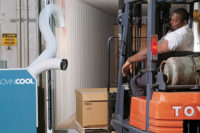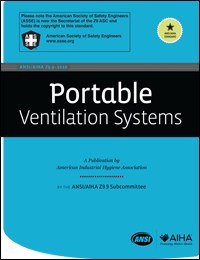This article will dispel the five most common misconceptions about portable cooling.
1 It’s too expensive to run.
While it is true that a portable air conditioner may use more electricity than an installed unit of similar cooling capacity, portables have the advantage of allowing targeted or selective cooling. For example, you can limit cooling only to “hot spots” around the plant, whether they occur due to heat-generating processes or equipment, heat gain from heavy sun exposure, or other factors. Portable units can be moved around to different locations and easily installed to deliver spot cooling efficiently to the most demanding areas.
Another example is nighttime or weekend cooling of offices, lobbies, conference rooms or server rooms that may be utilized after hours. It would be prohibitively expensive to keep a central a/c system running all the time, but these areas can be cooled independently while the main system is shut down, resulting in considerable cost and energy savings.
2 Portable cooling is only for emergencies.
It is true that portables are most frequently rented when cooling is urgently needed because of a heat wave or breakdown of the installed a/c system. But portable a/c is also used in many planned applications to cool people and/or processes, whether on a seasonal or year-round basis. In addition to the obvious comfort factor, portable cooling directly impacts safety by reducing heat-related fatigue, illness and accidents. It can also improve productivity and morale.
At a steel pipe and tube plant, for example, the use of a 5-ton portable cooler in a galvanizing area has succeeded in bringing ambient temperatures down by as much as 30 degrees F. Instead of being limited to 30 minutes, crews can now work for two hours in the galvanizing area before needing relief for ergonomic (not heat) fatigue. The unit has been adopted on a permanent basis and is credited with eliminating heat-related illness problems.
3 Portable a/c units are not suited to industrial use.
The portable coolers sold in home improvement stores may be adequate for residential use, but they don’t have the cooling capacity or heavy-duty construction needed in an industrial environment. But non-residential portable a/c distributors offer a range of products that are very well suited to industrial use. Units with 1-ton and 2-ton cooling capacity are the most widespread, but much larger 5-ton and 12-ton coolers are available that can provide greater coverage though they are still portable and compact.
How much cooling capacity (in Btu/hr or tonnage) do you need? A good rule of thumb is to plan on 3.413 Btu per watt when sizing equipment. That translates to around 1 ton or 12,000 Btu/hr of a/c for a 400-sq.-ft. room with an 8-ft ceiling and no additional loads other than lighting — or 3200 cu. ft. if the space must be cooled all the way up to a higher ceiling.
From there, numerous factors must be added into the equation, including the number, size and exposure of windows or other openings; available power source; heat-generating equipment or processes in the room; occupant level and activity; and other sources of cooling, if any. Your cooling equipment supplier can help you do the calculations and advise on whether a single large unit is best for the job vs. several smaller units that might offer greater flexibility and redundancy.
4 “We don’t need portables because the plant has central a/c.”
Even climate-controlled facilities are subject to problems if an overworked HVAC system should fail or if supplemental cooling is needed to deal with excessive heat. Additional cooling may also be needed in growing facilities where the primary HVAC system is no longer adequate or hot spots have become a problem. Another common application is to place portable(s) in service to maintain temperature control while installed HVAC equipment undergoes scheduled maintenance, repair or renovation.
5 “We can’t use it because there’s no good way to exhaust the hot air out of the space.”
Often a portable unit will be used to cool an office, server room or other small enclosed space within a warehouse. In a large facility with high ceilings, the hot air can usually be discharged up toward the warehouse ceiling with minimal effect on the rest of the building since cold air drops to the floor level. Similarly, in a manufacturing space, the hot air from the spot cooler can be discharged by running a rigid or flexible duct above workers’ heads to the ceiling, where there is often an exhaust fan to help remove the heat.
If it still problematic to exhaust the hot air due to location or space constraints, a water-cooled portable air conditioner might be an option. These units connect to an external water source and need no exhaust ducts, so they are often specified when there is no convenient way to exhaust hot air out of the room. They are very efficient to operate but are best suited to use in facilities where it is possible to tap into a central cooling tower or chiller system, or in regions where the municipal water supply is plentiful and economical.


